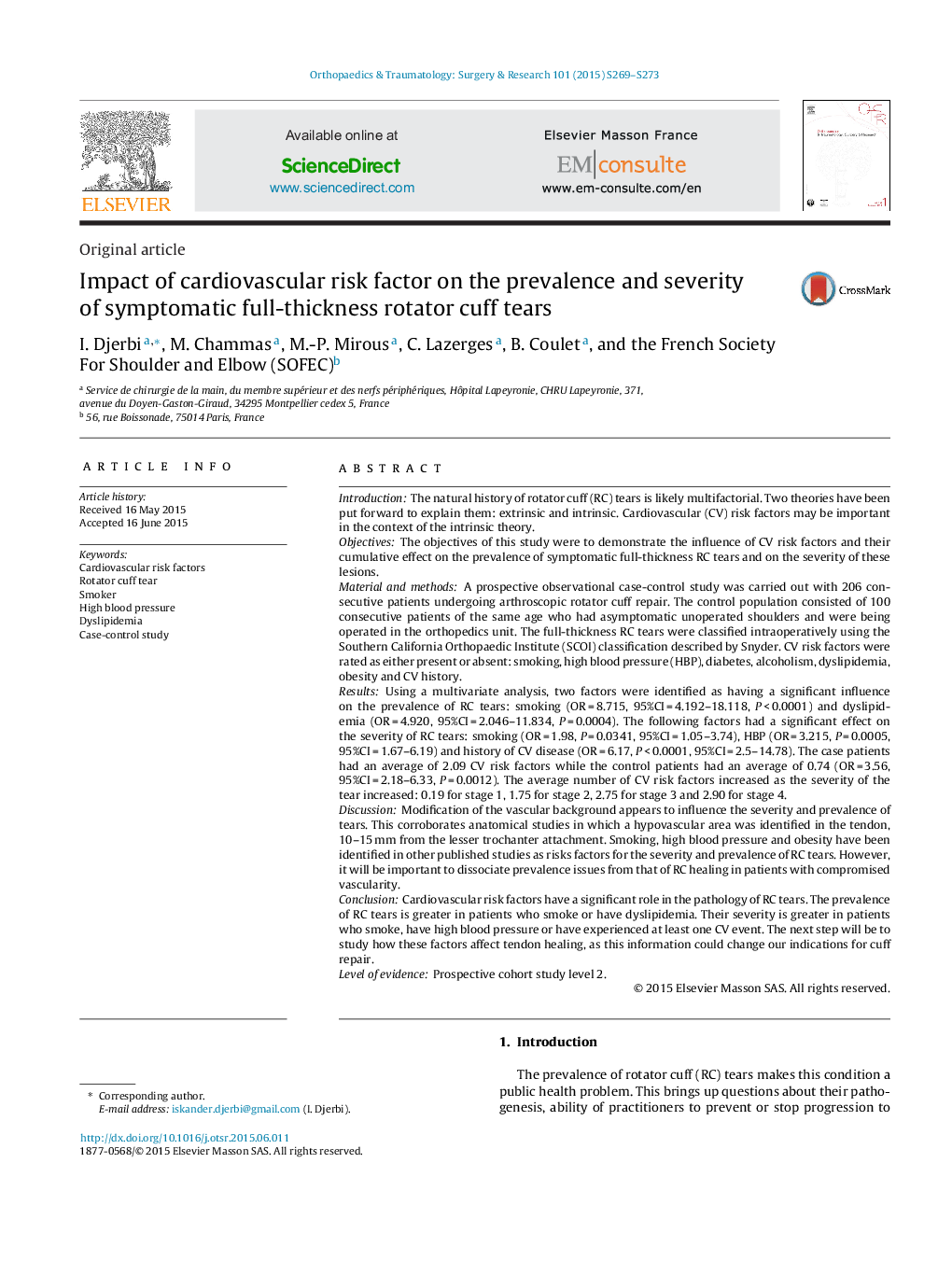| کد مقاله | کد نشریه | سال انتشار | مقاله انگلیسی | نسخه تمام متن |
|---|---|---|---|---|
| 4080915 | 1267571 | 2015 | 5 صفحه PDF | دانلود رایگان |
IntroductionThe natural history of rotator cuff (RC) tears is likely multifactorial. Two theories have been put forward to explain them: extrinsic and intrinsic. Cardiovascular (CV) risk factors may be important in the context of the intrinsic theory.ObjectivesThe objectives of this study were to demonstrate the influence of CV risk factors and their cumulative effect on the prevalence of symptomatic full-thickness RC tears and on the severity of these lesions.Material and methodsA prospective observational case-control study was carried out with 206 consecutive patients undergoing arthroscopic rotator cuff repair. The control population consisted of 100 consecutive patients of the same age who had asymptomatic unoperated shoulders and were being operated in the orthopedics unit. The full-thickness RC tears were classified intraoperatively using the Southern California Orthopaedic Institute (SCOI) classification described by Snyder. CV risk factors were rated as either present or absent: smoking, high blood pressure (HBP), diabetes, alcoholism, dyslipidemia, obesity and CV history.ResultsUsing a multivariate analysis, two factors were identified as having a significant influence on the prevalence of RC tears: smoking (OR = 8.715, 95%CI = 4.192–18.118, P < 0.0001) and dyslipidemia (OR = 4.920, 95%CI = 2.046–11.834, P = 0.0004). The following factors had a significant effect on the severity of RC tears: smoking (OR = 1.98, P = 0.0341, 95%CI = 1.05–3.74), HBP (OR = 3.215, P = 0.0005, 95%CI = 1.67–6.19) and history of CV disease (OR = 6.17, P < 0.0001, 95%CI = 2.5–14.78). The case patients had an average of 2.09 CV risk factors while the control patients had an average of 0.74 (OR = 3.56, 95%CI = 2.18–6.33, P = 0.0012). The average number of CV risk factors increased as the severity of the tear increased: 0.19 for stage 1, 1.75 for stage 2, 2.75 for stage 3 and 2.90 for stage 4.DiscussionModification of the vascular background appears to influence the severity and prevalence of tears. This corroborates anatomical studies in which a hypovascular area was identified in the tendon, 10–15 mm from the lesser trochanter attachment. Smoking, high blood pressure and obesity have been identified in other published studies as risks factors for the severity and prevalence of RC tears. However, it will be important to dissociate prevalence issues from that of RC healing in patients with compromised vascularity.ConclusionCardiovascular risk factors have a significant role in the pathology of RC tears. The prevalence of RC tears is greater in patients who smoke or have dyslipidemia. Their severity is greater in patients who smoke, have high blood pressure or have experienced at least one CV event. The next step will be to study how these factors affect tendon healing, as this information could change our indications for cuff repair.Level of evidenceProspective cohort study level 2.
Journal: Orthopaedics & Traumatology: Surgery & Research - Volume 101, Issue 6, Supplement, October 2015, Pages S269–S273
